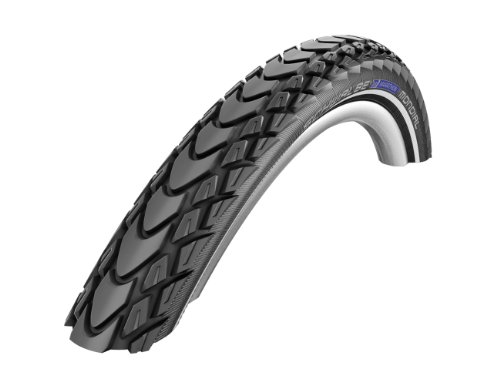Best Touring Bike Tires 2021
Contents
Schwalbe Marathon Plus HS 348 Road Bike Tire

Schwalbe Marathon Mondial Double Defence Tire

Continental Travel Contact DuraSkin Reflex Tire

Best Touring Bike Tires Buying Guide and Reviews
Tire option has a substantial impact on your ride – many road riders prioritise leak resistance and grip in the damp over winter and low rolling resistance come summer. To lower the number of punctures in a tire and boost the grip from the tire during the wet months, it is recommended that you employ a winter tire. Summertime tires are generally produced using a soft substance– this implies they offer a lower rolling resistance, making them quicker and lighter but much more vulnerable to rips and damage. A good set of tyres can assist you go faster and be more comfy at the same time. They may even help you corner better too. In terms of choosing tyres, it’s easy to find yourself overwhelmed, as a result of large selection to pick from. If you want to do more, make sure that you are choosing situationally appropriate tires. Whether you ride on rocks, snow, simple trails or trails with every kind of terrain, there’s definitely a tire for you. Bike tires are some of the most important pieces of a bike, so you’ll want to make sure you’ve got the right ones and that you treat them right.
What To Contemplate When Choosing Tires For Any Best Touring Bike
In the perfect world, a bicycle tyre would not really heavy, be immune to punctures and go really quick, As there is no such tyre, getting a couple of three of these attributes might be what you have to settle one. Keep the type of riding you will end up doing under consideration when coming up with your final decision on what tyre to get. For instance, if the majority of your time is spent heading out on gravel backroads or travelling on rough inner-city roads, you’ll be better off with a tyre that’s geared towards leak defense over speed and weight. On the other hand, if you frequently ride on great roads that are smooth, debris-free and dry, then some light-weight, racy tyres can be a terrific choice. Visit the manufacturer’s webpage or look at the packaging to determine a tyre’s rolling resistance triangle, puncture protection, and where they sit in weight,
- Tires which are wide are definitely more popular. Where once 23mm rubber was the uniform issue ‘choice’, now 25mm is the norm but many riders go for 28mm to better maximise the added cornering grip and comfort. The right rims will make wider tires more aerodynamic. Ahead of investing, be sure you check the frame’s capacity this really is crucial. Wider tires will continue to work better for your personal patch. A wider tyre can be faster because it minimises a tyre’s rolling resistance by reducing the energy lost to casing deformation. Wider tires work better to your patch. A vital feature to most of us is wider tires of 25mm and above can be employed to work at lower pressures thereby, offering smoother rides.
- To generate the key body from the tire, woven cloth is commonly used to encase the beads, creating a casing. Though nylon fabric is exactly what many tyres are made of, silk and cotton are utilized to make other tyres. The ride quality is significantly afflicted with the casing due to the threads per inch value (called TPI). Tyres with a low TPI will have thicker threads, which cause greater rolling resistance however make the tyre more resistant to leaks. Though tyres higher in TPI are definitely more lightweight and also have less rolling resistance on account of finer threads, they are more likely to get punctures.
- Tread is rubber through the tire which enables exposure to the highway. It’s made sturdier than the sidewall and may have a three-dimensional pattern. There is lots of arguing in relation to tread pattern, several say there is absolutely no desire for bike tyres to get tread. Because the texture of any road surface is so different, some tread patterns provide a quantifiable mechanical adhesion to the ground. The rubber compounds in tires are kept a secret for a lot of reasons. Generally softer compounds will offer superior traction but will wear quickly, while harder compounds will stand up to more abuse but won’t have the same grip.
- Grip vs Durability – if you’re searching for bike tires, you won’t want to sacrifice too much in rolling resistance or wear. A tire with a softer compound will offer better grip however will use much faster. There exists much less much traction with harder tyres, though they actually do go longer. Two of the most critical factors in obtaining balance correct is the particular terrain you ride on and the way hard you ride. An indication of a tyre’s hardness is measured in numbers – the higher the number, the harder the tyre. On the one hand, a 60a compound can last several seasons as it’s rather durable on the flip side, a 42a compound is better for corner traction and braking needs replacing every six months. A lot of manufacturers offer a mix of multi-compound tires which offers a good compromise in between the 2.
What Else Should You Really Factor In Your Look For Best Touring Bike Tires?
- Sidewall – Rubber is used to the side of the case in between the tread and the bead to form the sidewall. The intended reason for each tyre will determine both its rubber compounds as well as its thickness.
- Sub-tread is typical on tires and definately will help safeguard against punctures. Cheaper tires tend to have another layer of rubber under the tread which isn’t bad but it’s not nearly as effective as customized work or properly designed strips of fabric to strengthen the rubber.
Various bike tire concepts
- Damage on tires happens and it’s necessary to keep close track of the tread. Not only for the life of the tyre, but watching out for stuck glass or flints that haven’t penetrated just yet. In order to lessen your tire issues (especially with punctures) then be sure you take good care of your bike with frequent cleaning and basic maintenance/inspection before you go out again.
- Bike tyres and rate – we spend for innovation in the rubber, quality of the building and weight. More affordable options tend to do not have in grip, leak security and are generally supplied with a much heavier, take bead. Steel rigid tires are heaver and harder to transfer off the bike than other options like folding tires. Both hands will never be satisfied with you, since getting them on / off the wheel is hard, but they are indeed cheaper. A cheaper option may seem like the best option but it may not be as some of the tyre manufacturers on the market often make certain that their compounds are very well designed for a variety of temperatures. Which means that such tires can withstand any season along with their protection, grip or longevity works effectively all year round.
- Tread Type – different treads are planned for various terrains. You will need to purchase a tread that is certainly intended for what you will be utilizing it for. Are you presently still undecided about how precisely you are going to use your bike? If so, consider inverted treads. Although they generally do not work well in some areas, these are the best option for casual riders and people who love riding in numerous terrains.
- Size and width of your tire aren’t often varied. You need to understand that tires that are wide are better for gripping and turning, and narrow tires are typically better for acceleration and used while having a straight path. Which you need to opt for depends upon the kinds of locations you’ll be riding in.
Summary
To the untrained eye, the majority of bike tires are bit more than rings of black rubber – but as there’s a wide array of features and choices available to you. Eventually, though, it comes down to this: When you’re riding a bike, you must have the ideal tires. Now that you know what to search for, you’re all set to compare prices and features to ensure you have exactly the ideal tires for the terrain you wish to ride in.
